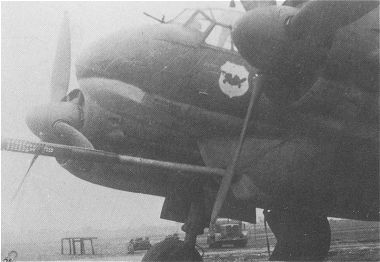The N- and P-series were only built in small numbers. They were designed as tank attack aircraft due to the request of the Eastern front in 1942 and were equipped with heavy tank canons. Severe problems during the design and test resulted from the canons, which cause structural cracks in the front nose and the propellers. Therefore the smaller BK3,7 canons were mounted, which were already used at the Ju87-G. Due to the structural additions the P1/P2 became to slow, therefore the stronger Jumo 211J was added to the P3, which finally was delivered to the front troops for test flights. Some of these aircraft were also transfered to fighter units at the West front. But due to the heavy canons these aircraft offered bad flight performances. The tank busting Ju 88P was developed from the Ju 88A-4, the Ju 88P-1 with a 75 mm Pak 40 cannon and the ensuing Ju 88P-2 to Ju 88P-4 with different combinations of heavy anti-tank weapons.



A BK 7.5 75mm PaK 40 cannon mounted in a Junkers Ju 88P-1. Since the huge gun affected flight characteristics, an explosive device was fitted so the pilot could jettison the gun and mounting.